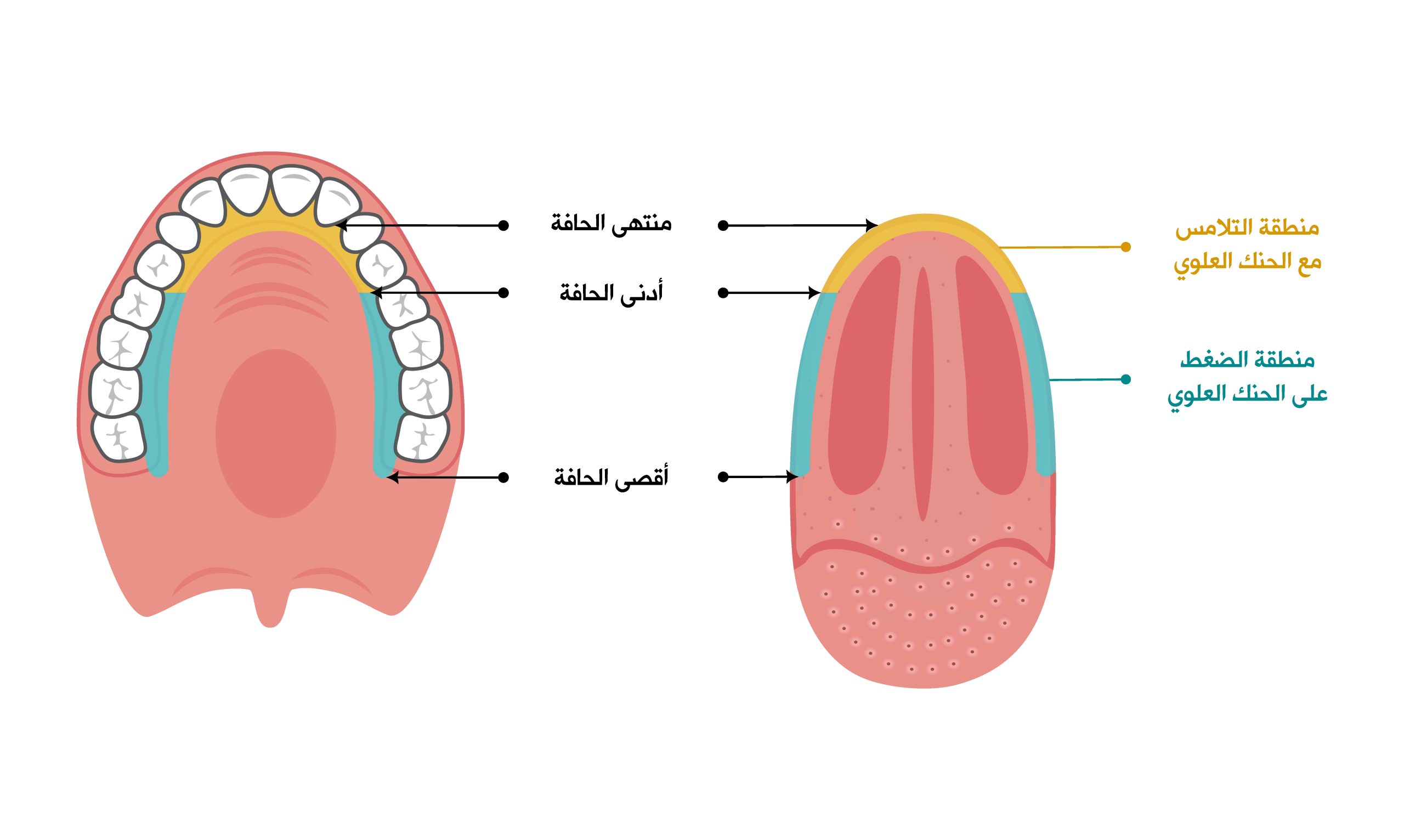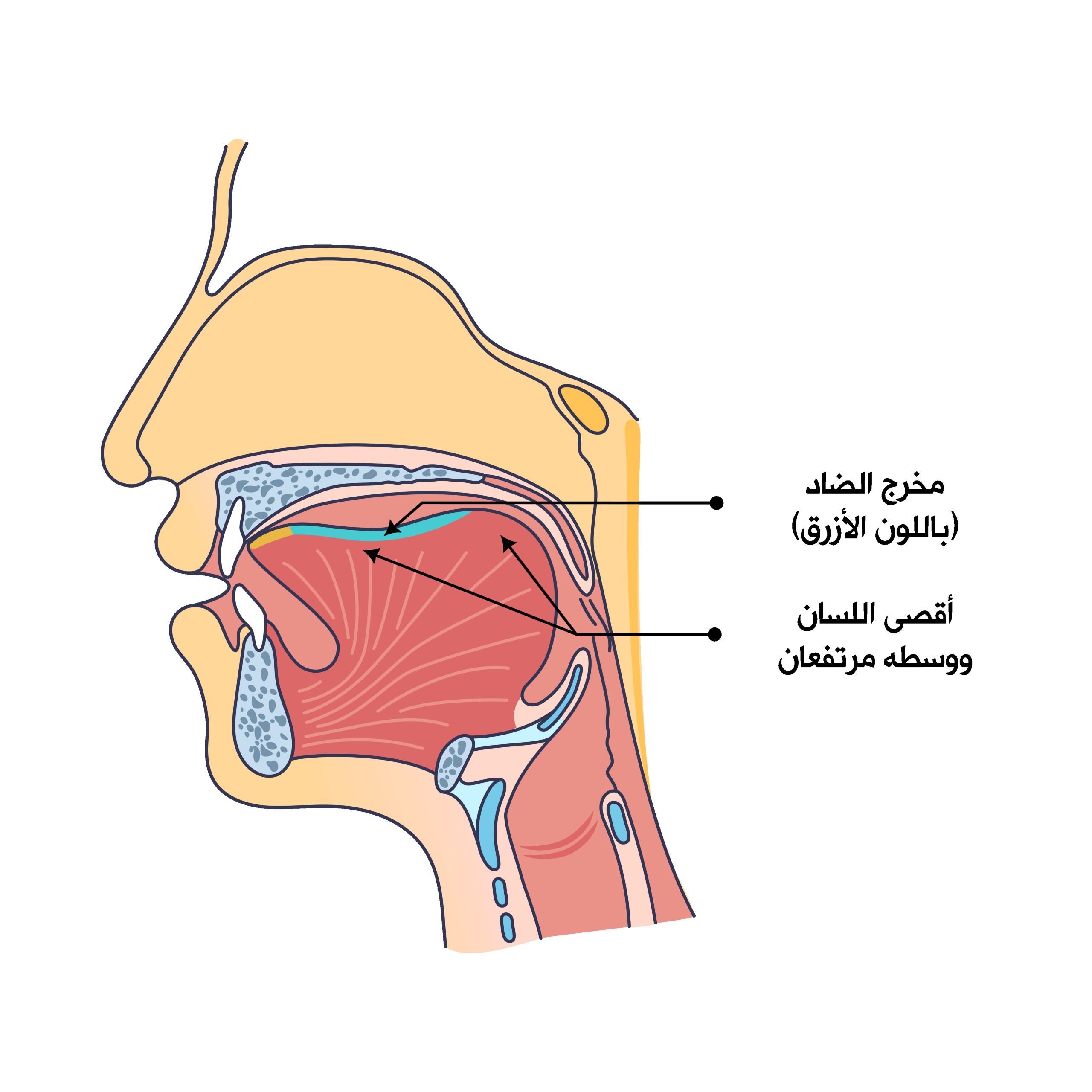Lesson 1 of 0
In Progress
حرف الضاد مخرجًا وصفة
This video demonstrates the Makhraj and characteristics of Ḍād, and how to practically pronounce it with Quranic examples and the most common mistakes that reciters make when pronouncing it.
First: The Articulation Point of Ḍād
تخرج Fourth: Common Mistakes in Pronouncing Ḍād من أقصى حافة اللسان إلى أدناها مع ما يحاذيه من الأضراس العليا، من الجهة اليمنى أو اليسرى أو منهما معًا، كما يظهر في الصورة.

Second: Main Characteristics of Ḍād

Istiṭālah (elongation), Rakhāwah (flexibility), Istiʿlāʾ (Elevation), and Iṭbāq (adhesion).
- يُلاحظ في صورة مخرج Fourth: Common Mistakes in Pronouncing Ḍād امتداده من أقصى حافة اللسان إلى أدناها، فهو يمتاز بأن مخرجَه أطولُ مخارج اللسان؛ ولذلك يتصف بالاستطالة.
- ويؤدي ذلك الامتداد في مخرج Fourth: Common Mistakes in Pronouncing Ḍād إلى جريان صوت الحرف في مخرجه، وهذه صفة الرخاوة فيه.
- ويُلاحظ في الصورة استعلاء أقصى اللسان؛ ممَّا يجعله حرفًا مفخمًا.
- كما يُلاحظ ارتفاع وسط اللسان كذلك، ممَّا يجعله من حروف الإطباق فيكون قوي التفخيم.
ثالثًا: طريقة نطق Fourth: Common Mistakes in Pronouncing Ḍād باختلاف حالاتها من خلال الأمثلة القرآنية:
You can click on the word to hear the correct pronunciation.
| أولاً: Fourth: Common Mistakes in Pronouncing Ḍād في حال السكون | ||
|---|---|---|
| أَضْ | أُضْ | إِضْ |
| ﴿أَضۡغَٰثُ﴾ | ﴿ٱضۡطُرَّ﴾ | ﴿ٱضۡرِب﴾ |
| ثانيًا: Fourth: Common Mistakes in Pronouncing Ḍād مع الحركات | ||
|---|---|---|
| ضَ | ضُ | ضِ |
| ﴿ضَرَبَ﴾ | ﴿ضُعَفَآءُ﴾ | ﴿ضِغۡثٗا﴾ |
| ثالثًا: Fourth: Common Mistakes in Pronouncing Ḍād مع حروف المد | ||
|---|---|---|
| ضا | ضو | ضي |
| ﴿ضَاقَتۡ﴾ | ﴿أَفِيضُواْ﴾ | ﴿أَرَضِيتُم﴾ |
| رابعًا: Fourth: Common Mistakes in Pronouncing Ḍād في حال التشديد | ||
|---|---|---|
| أَضَّ | أَضُّ | أَضِّ |
| ﴿ٱلضَّلَٰلَةَ﴾ | ﴿ٱلضُّعَفَآءِ﴾ | ﴿ٱلضِّعۡفِ﴾ |
رابعًا: من الأخطاء الشائعة في نطق Fourth: Common Mistakes in Pronouncing Ḍād:
- أولاً: نطقها كالحرف الشديد، وذلك بقطع صوتها سريعًا، نحوُ: ﴿ٱلۡأَرۡضِ﴾.والصواب، إعطاؤها صفة الاستطالة والرخاوة، بجريان صوتها في المخرج، هكذا: ﴿ٱلۡأَرۡضِ﴾، قال الله تعالى: ﴿لَهُۥ مُلۡكُ ٱلسَّمَٰوَٰتِ وَٱلۡأَرۡضِ﴾.
- ثانيًا: إبدالها ظاءً في النطق، نحوُ: ﴿ٱلۡمَغۡضُوبِ﴾. والصواب:﴿ٱلۡمَغۡضُوبِ﴾، ونحو: ﴿ٱلضَّآلِّين﴾. والصواب: ﴿ٱلضَّآلِّين﴾، قال الله تعالى: ﴿غَيۡرِ ٱلۡمَغۡضُوبِ عَلَيۡهِمۡ وَلَا ٱلضَّآلِّينَ﴾.
- 3. Lightening its sound, making it resemble Dāl, e.g., ﴿تُفِيضُونَ﴾. Correct: pronounce it heavily.
- 4. Adding bounce (Qalqalah) when non-vowelled(sakin), e.g., ﴿وَقَضۡبٗا﴾. Correct: avoid Qalqalah.
- 5. Mixing its sound with Ghunnah (nasal sound), e.g., ﴿وَٱضۡمُمۡ﴾. Correct: pronounce it purely without Ghunnah.
- 6. Merging it with some letters, such as Ṭā’, Taa’, or Jīm, e.g., ﴿ٱلۡمُضۡطَرَّ﴾, ﴿أَفَضۡتُم﴾, ﴿وَٱخۡفِضۡ جَنَاحَكَ﴾.
